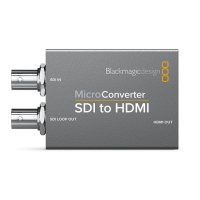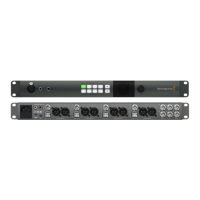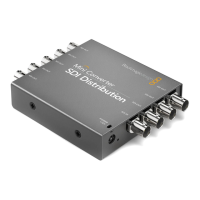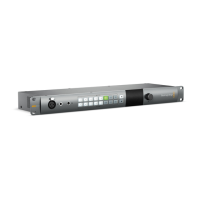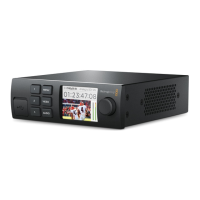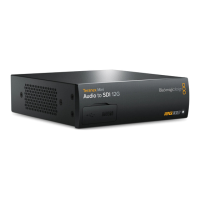Getting Started
5
Plugging in Power
Plug in the 12 volt power supply using the socket adapter for your country. The cable tie point is for
securing the power connection to your converter.
If you are using a Battery Converter with access to external power, we recommend using external power
unless you need to use the built in battery. This will maximize the life of the battery and ensure your
Battery Converter is fully charged when you need it.
Plugging in Video
Plug your source video into your converter's video input and plug the video output into your destination
equipment. Third party adapters are commonly available to connect any video equipment using alternative
connectors such as RCA.
The next step is to plug in audio.
Plugging in Audio
If you're using embedded audio in SDI, optical fiber SDI or HDMI, audio is already connected via the
video input. If using external analog or digital audio, plug into your converter's TRS audio inputs or
outputs. Third party adapters are commonly available to connect any audio equipment using alternative
connectors such as XLR.
Now configure any required settings using the mini switches.
Locking the power cable to the converter’s cable tie point
prevents accidental disconnection.
BNC connectors carry SDI video signals with embedded audio.
Connect external analog or digital audio to your converter's
TRS audio connectors.
